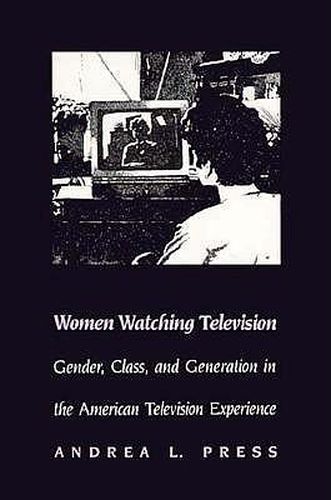Readings Newsletter
Become a Readings Member to make your shopping experience even easier.
Sign in or sign up for free!
You’re not far away from qualifying for FREE standard shipping within Australia
You’ve qualified for FREE standard shipping within Australia
The cart is loading…






Few issues are more important to feminist scholars than that of gender identity, especially women’s gender identity. Of particular concern are the ways in which culture shapes this identity. The author of this study focuses on one of the most powerful image-shaping forces within American culture - television - and examines the relationship between the representations television presents to women of themselves and their own self-images. She asks how women’s self-conceptions correspond to television images, whether women identify with the female characters they see on television, and whether women use television images in forming their own self-images. The answers to these questions depend on several factors, the most important being the social class of the women studied. The author contends that women’s inclinations to identify with television characters varies with their assessment of the realism of these characters and their social world. She finds that working-class women are much more likely to find television characters and situations real than are middle-class women, but that their evaluations of realism reflect their wishes about reality - especially material reality - rather than any objective assessment of the accuracy of television’s depiction of their own experience. In her exploration of this and other complexities, Andrea Press draws on feminist analyses of traditional theories of identification, Marxist and socialist analyses of class, and mainstream social scientific studies of the mass media audience.
$9.00 standard shipping within Australia
FREE standard shipping within Australia for orders over $100.00
Express & International shipping calculated at checkout
Few issues are more important to feminist scholars than that of gender identity, especially women’s gender identity. Of particular concern are the ways in which culture shapes this identity. The author of this study focuses on one of the most powerful image-shaping forces within American culture - television - and examines the relationship between the representations television presents to women of themselves and their own self-images. She asks how women’s self-conceptions correspond to television images, whether women identify with the female characters they see on television, and whether women use television images in forming their own self-images. The answers to these questions depend on several factors, the most important being the social class of the women studied. The author contends that women’s inclinations to identify with television characters varies with their assessment of the realism of these characters and their social world. She finds that working-class women are much more likely to find television characters and situations real than are middle-class women, but that their evaluations of realism reflect their wishes about reality - especially material reality - rather than any objective assessment of the accuracy of television’s depiction of their own experience. In her exploration of this and other complexities, Andrea Press draws on feminist analyses of traditional theories of identification, Marxist and socialist analyses of class, and mainstream social scientific studies of the mass media audience.